Delamere Forest
Delamere Forest, situated near Tarporely in Cheshire, is owned by the Forestry Commision. The forest is all that remains of the great Norman hunting forest of Mara and Mondrum, which once covered much of Cheshire. The name 'foresta de la mara' i.e. forest of the mere or lake, first appears in 1153-60, usually referred to in conjunction with the adjoining Forest of Mondrum. Once one of the hunting forests of the Norman Earls of Chester, it may have previously been an Anglo-Saxon hunting forest. In the early middle ages the forest covered over 60 square miles (160 km2), stretching from the Mersey in the north to a few miles north of Nantwich in the south, and from the Gowy in the west to the Weaver in the east. Game once included wild boar, and red, fallow and roe deer.
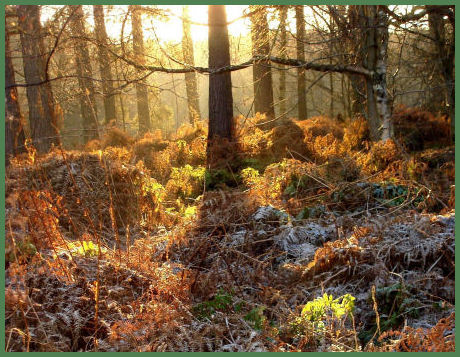
The more northern Forest of Mara remained wooded in the fourteenth century and still had a population of wild boar, deer and wolves. By that date, however, large areas of the southern Forest of Mondrem had been cleared. The last deer in the forest were killed during the Civil War, as clearance for agriculture progressively diminished the wooded area. A small percentage of the original area of the Forest of Mara, (around 7,755 acres) remained a hunting forest until 1812, when an Enclosure Act was passed. The Forestry Commission, established in 1919, took over the management of Delamere Forest in 1924, after which the land was managed for timber production.
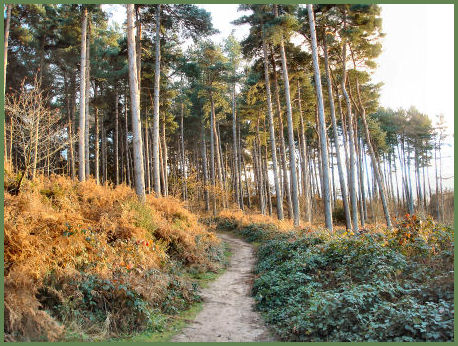
The forest, at over 9.5 square kilometres (2,400 acres) is the Cheshire's largest remaining area of woodland. Delamere Forest now consists largely of coniferous planting but the oaks and beeches which still line the roads give the impression of native woodland. Delamere is crisscrossed with many waymarked footpaths and cycle routes, including parts of the Sandstone Trail and Delamere Way long-distance footpaths. Delamere is disected by B5152 road and there are a number of car parks provided. The Linmere Visitor Centre (SJ546703) has an information centre, shop, cycle hire facility, covered picnic area and café. Cycle hire is also available.
Blakemere Moss
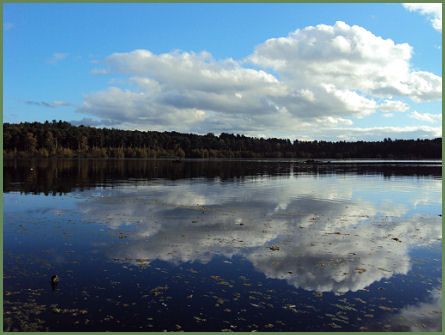
Within the forest lies Blakemere Moss, designated a Site of Special Scientific Interest. The lake was formed from two kettle holes (water filled hollows) at the end of the Ice Age. Since acquiring the site in 1996, the Forestry Commission have managed Blakemere as a restoration project for an area of wetland, it has become the habitat of a wide variety of wildlife and is a particularly popular site with ornitholigists. Black Lake, a rare example of quaking bog or schwingmoor, has also been designated a Site of Special Scientific Interest (SSSI) and forms part of an international Ramsar site. Linmere Moss has also been designated an SSSI for its fenland habitat.
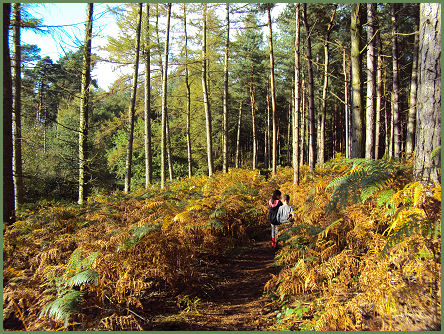
Hatchmere Lake also began as a kettle hole, of which there are several in the Delamere area. Some are flooded as here whilst others are dry or contain peat mosses. The mere originated as a detached mass of glacial ice melted in situ towards the end of the last ice age. The lake is a nature reserve, now in the care of Cheshire Wildlife Trust and is an important breeding ground for many bird species.
The Old Pale Hill rises to a height of 176 metres and is situated to the south of the area of the forest and is a major expansion of the Forestry Commission estate. The hill forms the high point of the northern mass of the Mid Cheshire Ridge. Views from the peak include the forest, the Cheshire Plain, Frodsham and Helsby Hills, the Jodrell Bank Observatory , the Derbyshire hills and the Liverpool skyline. On a clear day views of seven counties unfold and it is possible to see Cheshire, Derbyshire, Lancashire, Shropshire and Staffordshire in England, and Denbighshire and Flintshire in Wales.
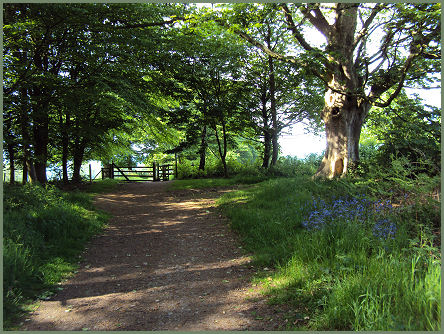
Britain's largest Go Ape! facility opened in Delamere Forest in 2006, a tree top adventure course of ropes bridges, Tarzan swings and zip slides up to almost 35 feet above the forest floor. Parking for Go Ape! Is located at the Whitefield Car Park.
Delamere Wildlife
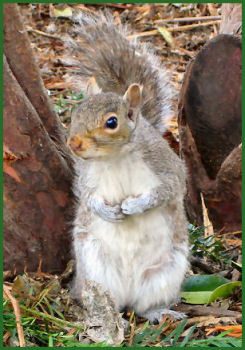
 Delamere Forest park is also a haven for wildlife including the beautiful Small Tortoiseshell Butterfly, Greater Spotted Woodpecker, White Faced Darter dragonfly, Siskin and Southern Hawker Dragonfly.
Delamere Forest park is also a haven for wildlife including the beautiful Small Tortoiseshell Butterfly, Greater Spotted Woodpecker, White Faced Darter dragonfly, Siskin and Southern Hawker Dragonfly.
The forest is particularly popular with ornithologists. The area provides a habitat for numerous woodland bird species, including nuthatches, treecreepers, crossbills, wrens, coal tit, blue tits, great tits, jays, siskins, tawny owls and greater spotted and green woodpeckers. Blakemere Moss, in the heart of the forest, is a shallow lake that attracts breeding gulls, waders and other waterbirds. Canada geese, coots, moorhens, and sandpipers also frequent the moss. Rare Mediterranean gulls have bred there in recent years.
Dragonflies such as the southern hawker can be seen in the wetland areas; the nationally scarce white-faced darter has been observed at several sites within the forest.
Butterflies such as the small tortoiseshell are common in the Old Pale area. Adders have been observed in the woodland, and mammals seen here include badgers, foxes and bats.
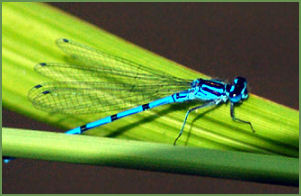 The following species of dragonflies and damselflies have been recorded at Black Lake, a nature reserve in the south west corner of the forest:- White-faced Darter Leucorrhinia dubia (last recorded 1997), Brown Hawker Aeshna grandis, Four-spotted Chaser Libellula quadrimaculata, Common Darter Sympetrum striolatum, Black Darter Sympetrum danae, Large Red Damselfly Pyrrhosoma nymphula and Common Blue Damselfly Enallagma cyathigerum
The following species of dragonflies and damselflies have been recorded at Black Lake, a nature reserve in the south west corner of the forest:- White-faced Darter Leucorrhinia dubia (last recorded 1997), Brown Hawker Aeshna grandis, Four-spotted Chaser Libellula quadrimaculata, Common Darter Sympetrum striolatum, Black Darter Sympetrum danae, Large Red Damselfly Pyrrhosoma nymphula and Common Blue Damselfly Enallagma cyathigerum
Grey squirrels and many colourful forest birds, including chaffinch, nuthatch, robins, blue tits, great tits, green woodpecker, coal tits, jays and goldfinches can be observed at the feeding tables at the car park and at the Linmere Visitor Centre.
Forest Trails
*Linmere Trail - start at Delamere Information Centre - green waymarkers - 1.7miles - 0.5 hours - easy
*Blakemere Trail - start at Delamere Information Centre - red waymarkers - 2.7 miles - 1.25 hours - easy
*Easy Access Trail- start at Barnsbridge car park- part of red trail, surfaced path leading down to Blakemere
Follow the Country Code
*Be safe- plan ahead and follow any signs.
Protect plants and animals and take your litter home.
Keep dogs under close control
Leave gates and property as you found them
